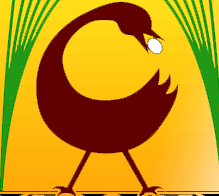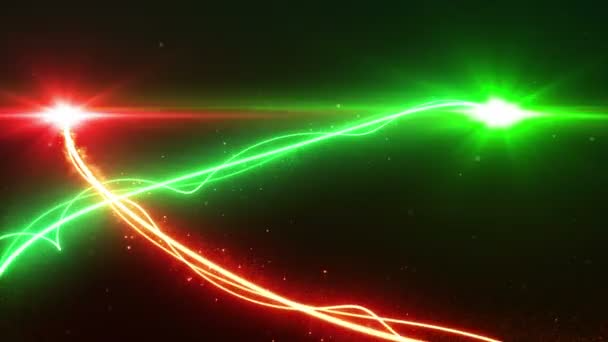Sehemu Kumi Na Moja Za Sankofa (Eleven Parts of Sankofa) – Mkia wa Sankfoka (Tail of Sankofa)
- By kwende ukaidi
- •
- 11 Oct, 2020
- •
Go Back and Fetch

The Creator Supreme is the bringer forth of all life and phenomena in the
sacred universe. The marvellous Afrikan souls have always been deeply knowing
of this. As such this primary and spirit people have used their genius flow in
their divinely ascribed role as principal caretakers in the world. The
self-governing ones of natural and righteous order. It is therefore, crucial
that Afrikan people eternally know who they are and their central role in the
sacred universe. Not only is this important for the rightful and continual flow
of Afrikan ascendancy but also for righteous to prevail on earth. The
Sankofa bird is powerful representation of the living eternal Afrikan continuum
of past, present and future referred to as history. Sankofa means, ‘go back and
fetch it’. It is represented as the mythical bird with its head turned
backwards holding an egg in its beak. It is also represented as a heart shaped
symbol with curling design. Both images are deeply meaningful. The following
are the eleven aspects or parts of Sankofa depicted in its bird likeness as
organically synthesised and articulated by this author with Kiswahili
identifiers. The Kiswahili word for parts is Sehemu. The Kishwahili phrase for
eleven is Kumi na Moja:
The tenth part of the Sehemu Kumi Na Moja Za Sankofa is the Mkia wa Sankfoka (Tail of Sankofa) – This is the symbol of direction. Direction is key to the upward progression of Afrikan life and history fundamentally informs this. Navigation to purpose filled destiny is key. In fetching from history course for destination remains right and true. Mistakes of the past are also avoided and victories are forever realised.
The tail of Sankofa is the phenomena of sure navigation and the determiner of true direction. This is a symbol of Afrikan destiny whereby Afrikan souls enrich themselves with the living knowingness of their superlative skills and experience to chart a firm course of Afrikan elevation. It is the tail that is orchestrated to guide imperative ascent and is adjusted to take advantage of all the strengths that experience and genius-filled skills yield whilst, at the same time, it is positioned to avoid any mistakes and pitfalls. Of course, (as it is with the other parts of Sankofa), the Mkia wa Sankofa is part of the progressively functional whole and its victorious operations are a result of profound and deep living knowingness of the Afrikan self at all its various levels that comes out of the grand Afrikan history continuum. Mkia wa Sankofa is a representation of essential functioning as it ought to be expressed in Afrikan life.
Sankofa depicted as the curly heart-shaped symbol simply summarises all of the parts. In addition, it emphasises the heart of Afrikan self love Moyo wa Sankofa (Heart of Sankofa). Like the Ibis of Djehuti from the Ancient Nile Valley Sankofa is deified living articulation. When the Ibis sleeps it tucks its head into its feathers and its body forms the shape of a heart. The Sanfofa heart shaped symbol becomes self-love in the study articulation, reclamation, restoration and living of Afrikan history as the Afrikan soul continues to climb on the imperative path of global Afrikan ascendancy.
In this time of foreign enemy disruptions of genocidal disorder, the spiritual and cultural process of Sankofa is vital and urgent. As ever greater numbers of Afrikan souls recognise and restore their spiritual and cultural fabric history becomes more than simply intellectual stimuli from the important learning processes that must be in place. It is divine beingness elevated onto the plain of knowingness for Afrikan maximum potential and capability to be achieved. During the wonderful observance of Afrikan Historia Msimu the powerful Sankofa bird is an elevated essential of the period that continues its journey of uplift and empowerment of the Afrikan soul all year round.
Afrikan Historia Msimu is an observance period for the duration of the tenth month of the year (so-called October). This is a special time for learning, growth and development of the Afrikan experience in the world. It is a time of spiritual and cultural elevation as Afrikan history is restored to fabric of life in the living knowingness of the then, the now and tomorrow. Great ones of the Afrikan journey are highlighted and the symbols relevant to the time invigorate life in the imperative onward flow of global Afrikan ascendancy. This wonderful observance is a part of the cultural calendar of the Universal Royal Afrikan Nation (URAN).
The Universal Royal Afrikan Nation (URAN) is an Afrikan-centred spiritual and cultural mission for ascendancy that embodies living spiritually and culturally rooted life. To find out more about URAN and its spiritual-cultural mission for liberty and nationhood click here. The exquisite URAN pendant can be obtained online by clicking here.
In his capacity as an Afrikan-centred spiritual cultural practitioner this author is available for further learning in this regard and also for the carrying out of ceremonies such as naming and name reclamation. For details please click here.
Afrikan World Studies programmes are important forms of study in understanding the Afrikan experience. There are a range of subjects covered on these programmes including History, Creative Production, Psychology and Religion. To find out more about these learning programmes please click here. For the video promo for these learning programmes click here.
At nominal cost, also consider acquisition of an a4 laminate poster of articulations by this author when visiting the Yemanja institution to enrol, consult, learn, gather or otherwise.
Also, visit www.u-ran.org for links to Afrikan liberation Love radio programme on Universal Royal Afrikan Radio online.
